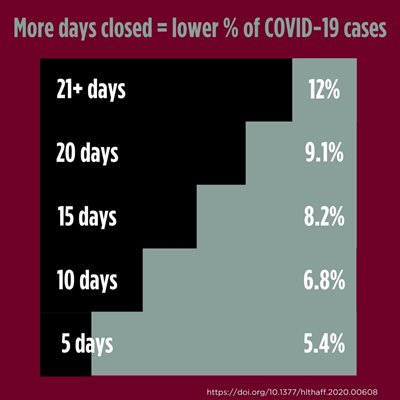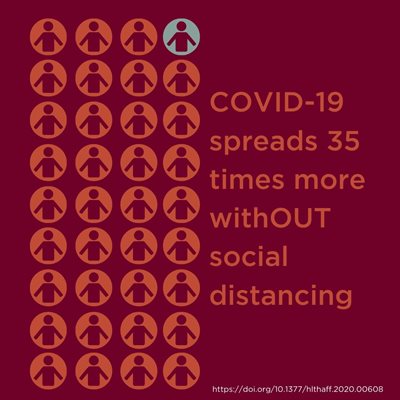Social distancing works

As businesses and venues start to reopen to customers, a recent study reminds us of the positive impact safe practices can have against COVID-19, aka novel coronavirus. The research found that the longer social distancing policies are in place, the greater the reduction of COVID-19 cases. The researchers hoped by providing this information that: “Individuals may voluntarily engage in avoidance behavior, such as hand washing or wearing masks, once they fully perceive the risks of contagion.”
Researchers from Georgia State University and the universities of Louisville and Kentucky studied the effects of four social distancing policies on the growth of COVID-19 cases between March 1 and April 27. They found as many as 12% fewer cases when policies were in place for over 21 days.
Four main social distancing policies were studied:
- Large event bans
- School closures
- Closures of entertainment venues, gyms, bars and restaurant dining areas
- Shelter in place orders
More days closed = fewer COVID-19 cases
When all four policies were in place for up to five days, COVID-19 infections were reduced by 5.4%. At the outer end, keeping the four policies in place for over 21 days resulted in 12% fewer cases. Alternately, not observing any of the social distancing policies could increase the spread of the virus by up to 35 times.
Maintaining only the closure of entertainment and similar venues (one of the four studied policies), also had positive results. Keeping people away from each other by closing down concerts, plays, movies and other big entertainment gatherings reduced cases of COVID-19 by 5.2% if those restrictions were in place more than 21 days.
“At issue is not whether isolation works to limit the spread of disease, but rather whether the particular government restrictions designed to encourage social distancing in the US reduced spread relative to simply providing information and recommendations,” said the researchers.
The researchers took into account such things as the availability of testing, higher-risk populations and rates of voluntary social distancing if policies weren’t in place. But not all factors could be covered such as mask-wearing. The case of asymptomatic carriers, those who may be unknowingly spreading the disease without showing any outward symptoms of COVID-19, could also not be evaluated.
Tips for a new normal
Meghan Qualls, Community Medical Centers Infection Preventionist, shares some ways to keep you and your loved ones safe while getting back to business. Chief among these is to wear a mask and to wash and dry cloth masks on high heat for 20 minutes every day.
Qualls says, “It’s really essential to make sure you’re washing your mask on a daily basis. The mask is collecting germs from you and others who may be coughing, sneezing or even talking near you.” In many cities, such as Fresno, masks are required for entrance into businesses and in public spaces where you might encounter others.

Getting supplies delivered or ordering curbside pick-up rather than going into a store or restaurant is still a helpful strategy, “anything that would limit contact with others.” Qualls agrees that social distancing is one of the important factors in limiting the virus’ spread.
What does 6 feet look like?
Keeping six feet of distance between yourself and others is still the recommended practice. Qualls shared some common ways to show what that looks like with household items:
- A small sofa or a love seat (arm to arm)
- A twin mattress (top to bottom)
- A yoga mat (length-wise)
What does shelter-in-place mean?
The California Department for Public Health (CDPH) still recommends sheltering in place when possible. That means staying home except for essential work, activities or needs; especially if you’re showing symptoms of illness.
The best sources of information related to the virus are the Centers for Disease Control and Prevention (CDC) and the CDPH, in addition to your own county public health departments.
